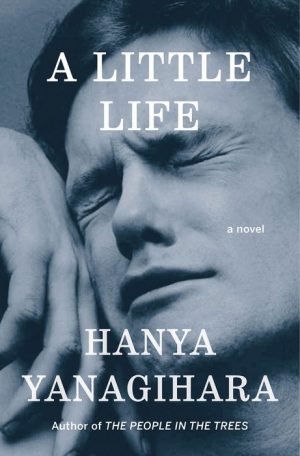Disney’s Take on Body Positivity With “Reflect”
A review of an inspiring short film about a ballet dancer and her struggle with self-confidence.
February 15, 2023
The world of ballet has been plagued by antiquated notions of what it means to be the ultimate ballerina. Having a lengthy ballet background myself, I’ve witnessed some of these notions firsthand, being told on multiple occasions that I wasn’t good enough due to my size and stature. Though the ballet primas you see onstage come from a multitude of cultural backgrounds, they’re all ordinarily secluded to one region—Europe—and all fall under those aforementioned “antiquated norms.”
It’s unsurprising that the ideal dancer is normally caucasian with long hair, a long neck and legs, and most of all, skinny. The Disney short film “Reflect” attempts to address those expectations through the eyes of a young, plus-size girl who’s insecure about her body upon seeing her thinner classmates gather at the barre for class. For those curious about whether to take the 6 minutes and watch it, I’ve got the review for you here.
This animated Disney short can be found on Disney+ under season 2 of “Short Circuit Experimental Films,” and begins with a young girl in ballet class. She practices her steps in the classroom proudly while occasionally dancing lively to the piano music in the background. She is then interrupted by the onslaught of her classmates flooding into the room and her teacher announcing the combinations of steps they’re instructed to perform at the barre. However, before this, the protagonist stares at her reflection in the mirror beside her, gazing uncomfortably at her stomach with an apparent look of sadness upon her face.
It’s apparent that she’s dissatisfied with her body and attempts to suck in and make herself appear smaller. She attempts to continue, but her emotions get the better of her as she continuously looks in disgust at her reflection. This scene lasts but a second before the glass beside her breaks to reveal a monstrous entity—presumably signifying her perception of the mirror as her enemy—beneath the surface that swallows her up, sending her into a gallery of mirrors all displaying her reflection. As she hurriedly runs around the room trying to find an escape, she looks again into the mirrors. She seems reluctant to look at her reflection, still believing that she’s ugly or in some way monstrous—a feeling that I’ve experienced myself. She stares anxiously into the mirror like it’s harming her in some way, although it’s simply reflecting her appearance. She runs around until she looks again but calmly this time, and decides that instead of running, she’ll dance confidently despite the troubling environment she’s found herself in. She leaps and turns around the room to the melody of glass shattering around her, until finally, the room collapses as the protagonist grand jetes through her final obstacle, gliding to the barre with a much more confident demeanor than before. Her insecurities appear at this point to have vanished, and instead of looking at herself with disgust, she smiles happily to herself as she resumes her class, signifying that dance is what brings her happiness and dance will be what pulls her through her struggle.
The initial part with the protagonist dancing then gazing into the mirror, though devastatingly brief, amply displayed her low self-image and how it affects her. I would’ve loved for this to be longer, though. Through the 6 minute run-time (the first couple being an interview with the short’s creator, Hillary Bradfield) only about a minute of that is an introduction into the character and her struggles. The film would have benefited from more time with her in the mirror before the climax. Coming from experience as a ballet dancer with her own body image struggles, it’s difficult to encapsulate the difficulty of dancing in a body you’re uncomfortable with due to the norms set by the people around you. There were nights where I would run home crying to my mother because I believed I was a monster. I would sob and envision myself in a body much smaller and think all my troubles would go away, so I identify with the protagonist’s struggle.
Many times, the teacher is a perpetuator of ballet stereotypes, and I would’ve loved to see more insight into her method of instructing class. As a teenager in ballet, I would be graded upon my performance, and instead of getting notes on my technique from my instructors in the final half of the season, I was reprimanded for my physique and told that I was “too big to be a professional dancer,” and if I want to be successful, I need to lose weight. This is why it’s crucial to identify where and how these norms are created and spread. Establishing this outright would’ve helped build the vibe of a ballet classroom for those who are unfamiliar with it. It’s true that a teacher sets the tone for class, even in fields outside of ballet.
I did enjoy the ensuing climax with her dancing in a room of mirrors. I found this very symbolic and wonderfully executed. A dancer’s life is lived through the mirror, and though it’s exhilarating seeing yourself grow as a performer, it’s equally troublesome as with every correction, we critique ourselves in turn. I would find that with every leap, I’d judge the size of my thighs, and with turns I would critique the size of my shoulders and traps, believing them to be hideous and precisely what was keeping me from success. However, what this film beautifully does is turn the protagonist’s weakness into her strength as she learns to appreciate her reflection through dance. As she pirouettes and leaps through the mirrored room, her confidence returns, and once again, she can dance freely.
Despite the multiple insults hurled at me from my teachers, I found that the one thing helping me continue dancing was my passion for the art. I lived for dance; I breathed it and survived off of it. I wanted nothing more than to do it forever, and I knew that if I focused too much on those comments, I would lose sight of the one thing I loved more than anything. We see that though she doesn’t align with ballet standards, her passion rivals expectations, and as corny as it sounds, that’s a message that all dancers need to see. Passion ultimately means more than any unrealistic expectations set by any instructors.
Suffice to say I’m satisfied with the short film, though I would like to have seen more emphasis on certain elements before being pulled into the room of mirrors. Dancing from a young age, I knew all too well what it takes to do ballet. I’ve experienced a multitude of snide remarks for my overly muscular body type, which took a significant toll on my self-image as I grew older, and I foolishly began to believe that I never deserved a spot in the front row. I was one amongst many classmates who suffered the same trials, but oftentimes for young dancers, it’s a journey you battle alone. I wish younger me could’ve seen a film like this. I envision myself as the protagonist now years after I quit dancing, and I feel that I’ve been seen and heard for the first time. I was never comforted by instructors, nor was I told anything positive about my appearance, so seeing that a young girl found solace in her love for dance made me overwhelmed with happiness. I would love to see “Reflect” made into a full-length film. Same protagonist, same setting, and even more emphasis on the struggles of becoming a dancer and learning to appreciate the body you’re in.
Ballet will never be an easy artform to partake in. Dancers have already begun to break the mold of what a traditional ballerina is, such as Misty Copeland and Michaela DePrince: Copeland being the first female, African American principal ballet dancer at the American Ballet Theatre, and DePrince challenging body expectations with her muscular physique and vitiligo. Though these women are contributing greatly to change, I doubt we’ll see a full-scale change anytime soon. It’s a good start, but I would love to see the ballet industry change for the better, and I think films such as “Reflect” are helping create an industry more inclusive for all. Dance should not be an exclusive activity. More than anything, instructors should promote the good parts of dance such as the encouragement of storytelling and self-expression—two elements I fell in love with.
To all dancers out there—past and present—I hope “Reflect” was able to speak to you like it did to me. Know that passion is what drives a performer to excellence, not their size, though it may appear that way. Though no dancer is perfect, we can always strive to perform to the best of our ability. Let’s strive for a more inclusive classroom and a place for all at the barre.
Overall, I give “Reflect” a 4.5/5.








